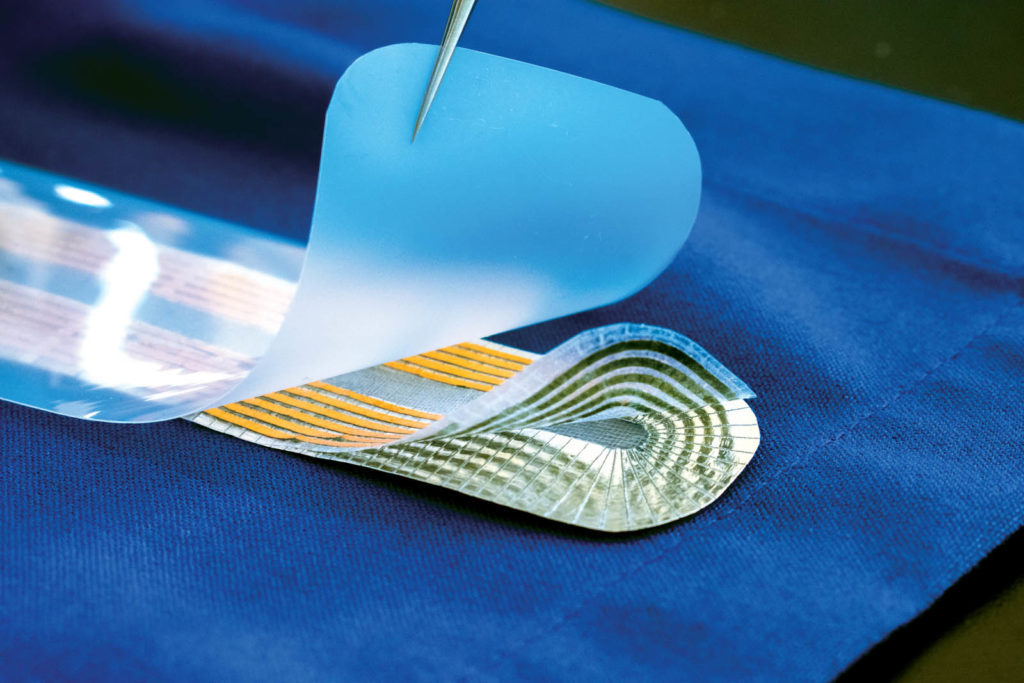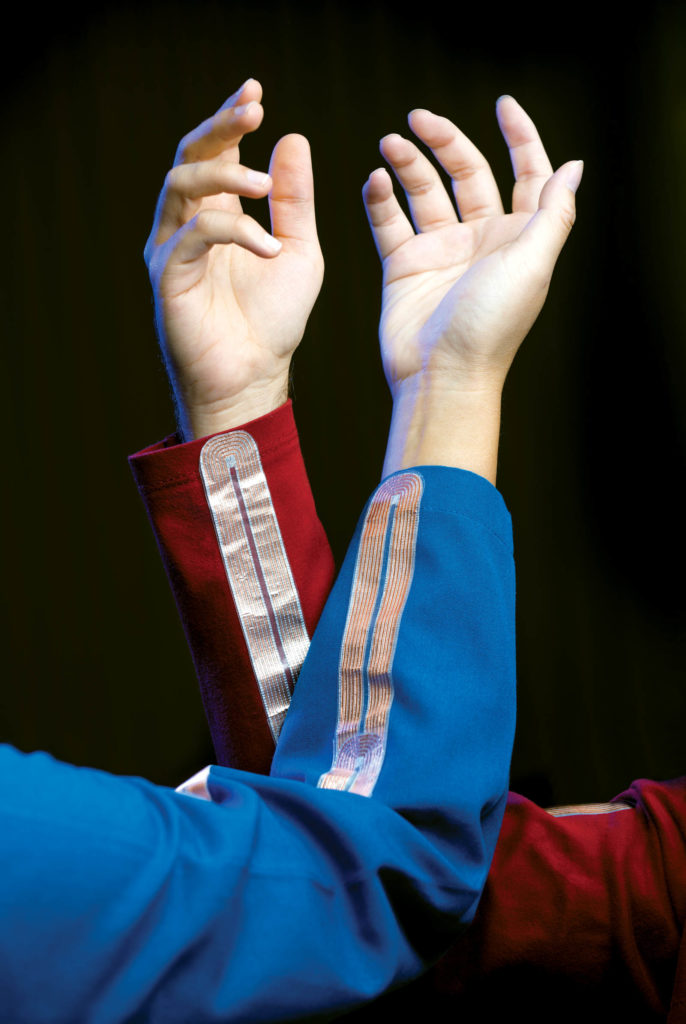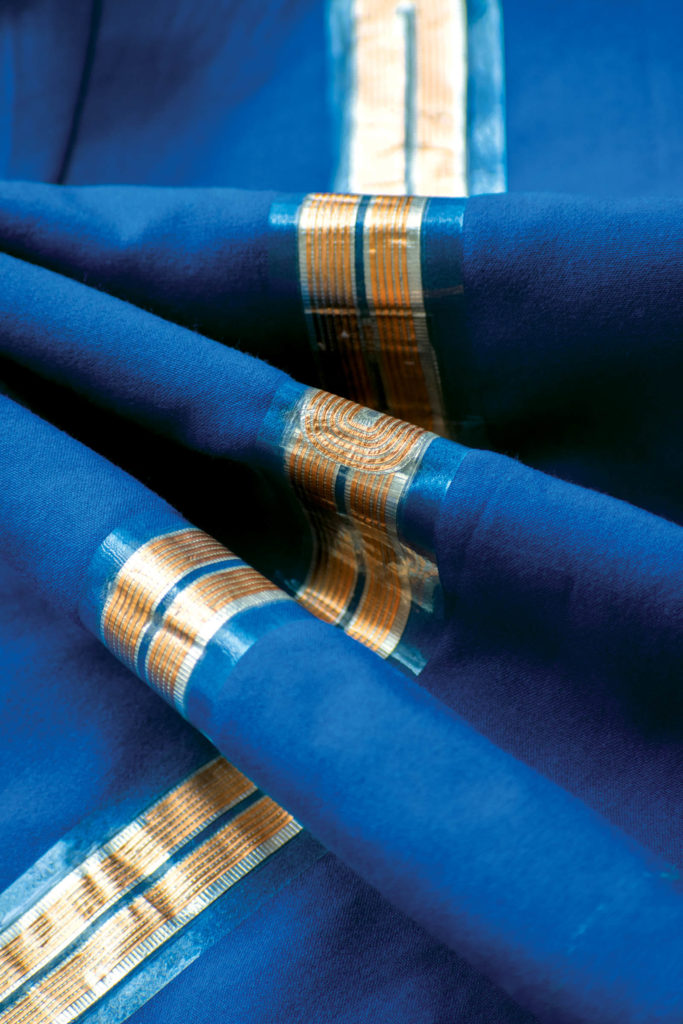
Most of us have experience with some form of near-field communication. Whether it is a smart phone, a “prox card” to unlock a room, or a contactless credit card that you wave in front of a reader, the technology has become ubiquitous. But what if you could pay for your purchases not with a card but with a wave of your arm?
In a paper published in Nature Electronics, researchers at the University of California, Irvine’s Henry Samueli School of Engineering tell how they integrated advanced metamaterials into flexible textiles to create a system capable of battery-free communication between articles of clothing and nearby devices.

While the NFC protocol has enabled the growth in applications like those mentioned above, they have had a limited range of only a couple inches. NFC-enabled devices must be either physically touching or within a few inches of each other for data transfer to occur. The UCI team found a way to extend the signal reach to more than 4 feet using passive magnetic metamaterials based on etched foils of copper and aluminum.
Lead author Amirhossein Hajiaghajani, a UCI Ph.D. student in electrical engineering and computer science, noted that the invention enables wearers to digitally interact with nearby electronic devices and make secure payments with a single touch or swipe of a sleeve.
The textile is highly flexible. Because signals travel in the UCI-invented system via magnetic induction—instead of hard-wire connections—it is possible to coordinate separate pieces of clothing. In athletic gear, for example, pants can measure leg movements while communicating with tops that track heart rate and other stats.

The applications in medicine are countless, Hajiaghajani said, such as integrating numerous sensors into specially equipped hospital gowns that can instantly be read by doctors and nurses.
The fabric’s electronics connect as soon as the user approaches a wireless reader. “You can share information with a simple high-five or handshake,” Hajiaghajani said.
 TEXTILES.ORG
TEXTILES.ORG


